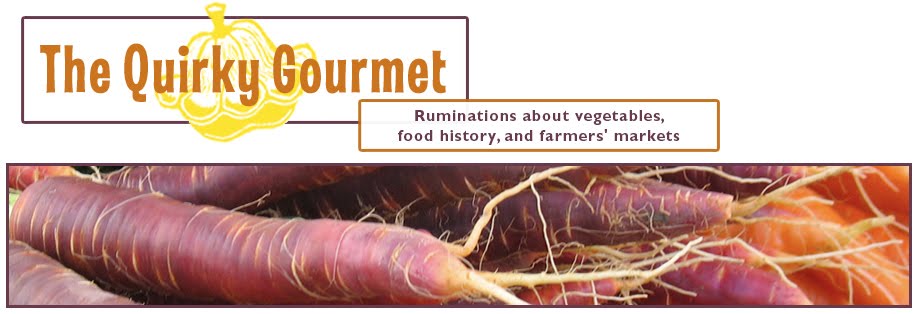
Working in food businesses for many years, I've always been struck by how much waste is built into the industry.
Sometimes we waste food because of safety concerns, when items pass their pull dates. But much of what gets pulled is perfectly good food. Nobody can say for sure when a container of milk or a bag of lettuce is going to go bad, any more than they can tell exactly when a piece of fruit will ripen.
Sometimes we waste food because it's cosmetically imperfect, when leaves or labels or damaged, because consumers will inevitably choose the more perfect option.
Sometimes we waste food because it takes a surplus to create an appealing display. Nobody wants to buy the last, sad orange, but when there's a lovely tall pyramid of oranges, everybody wants one. There's more waste when you think in terms of piling food high to create the appearance of bounty than when you try to stock only what you're actually going to sell.
In my own businesses I've always tried to waste very little, and also to make use of the unused surpluses that other companies create. That's both mercenary and moral. At the farmers' markets I've always bought leftover produce cheaply at the end of the day. One farmers told me that he used to think in terms of selling out at the end of the day, so he wouldn't sell much during the last hour because his table would be empty. Once he started stocking up his table even late in the day, knowing that I would buy whatever he had left, his sales increased.
Lately there hasn't been much to spare at the end of most market days. The weather is partly responsible: produce has been coming in slowly this year. There's also an increased demand for market produce as folks grow disillusioned with the mainstream food industry. And the farmers themselves are getting better at using their own surplus, and wasting less.
I'm excited about many of these changes. I'm also learning to look in new places for usable surplus. I've been using broccoli and cauliflower greens, as well as the leaves from turnips and radishes. Nearly every time I approach a farmer to ask about their usable surplus, they suggest something that I didn't even know could be eaten. I'm happy to pay for these greens, which they usually just carry home and throw on the compost pile.
During this time of food shortages, I often find myself wondering how much hardship we could alleviate simply by learning to value our food differently, and wasting less.
 Last night I attended a fundraising dinner for the Community Alliance for Global Justice. The event paired local food producers like Taylor Shellfish Farms and Mt. Townshend Creamery with local chefs such as Julie Andres of La Medusa and Seth Caswell of Stumbling Goat Bistro. The evening was very, very hot but the food was wonderful and the cause felt urgent and relevant.
Last night I attended a fundraising dinner for the Community Alliance for Global Justice. The event paired local food producers like Taylor Shellfish Farms and Mt. Townshend Creamery with local chefs such as Julie Andres of La Medusa and Seth Caswell of Stumbling Goat Bistro. The evening was very, very hot but the food was wonderful and the cause felt urgent and relevant.



























